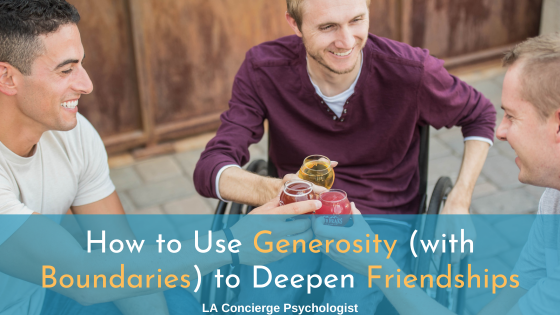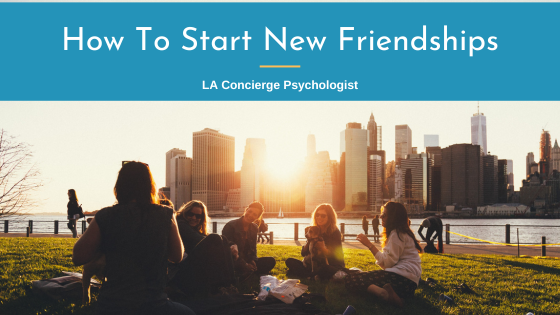A few months ago, I read a book by Catherine Pittman and Elizabeth Karle called “Rewire Your Anxious Brain.” This book takes a neuroscience-focused view of anxiety management. Reading this book has rekindled my interest in the biological side of anxiety, which doesn’t get as much attention as it deserves.
Many anxiety therapists use a purely cognitive (thinking-centered) approach. Paying attention to clients’ thoughts is an essential element of treatment since negative thoughts often play a significant role in their anxiety. However, this approach is incomplete. As Pittman and Karle remind us, non-thinking parts of the brain, such as the amygdala, also contribute to anxiety. To treat anxiety successfully, you must address what’s happening in both the brain’s thinking and non-thinking parts.
A neuroscience-focused approach to anxiety can help anyone struggling with fear and stress, but we think it will be particularly beneficial for teens and tweens. Research suggests that 1 in 3 adolescents in the U.S. has an anxiety disorder,[i] and our experiences as teen therapists support this assessment. Teenage anxiety is more than just normal; it is concerningly commonplace.
To help anxious teens and the people who care for them, we’ve created a blog series on the neuroscience of anxiety and how it relates to adolescent life. This post, the first of three, describes the anatomy of anxiety within the brain. It also provides examples that illustrate what anxiety can look and feel like in adolescence. In future posts, we’ll explain how to pinpoint the source of a teen’s anxiety and use that information to create effective anxiety management strategies.
What causes teenage anxiety?
To understand a given teen’s anxiety, you have to look at more than just their current circumstances and past experiences. To find out why teens react to stress in certain ways, you must also acquaint yourself with the evolution of the brain’s anxiety pathways.
Our ancestors’ vigilance against potential threats helped them survive. Thanks to their fears and watchfulness, they successfully evaded predators, dodged striking snakes, and maintained strong tribal relationships, allowing them to survive long enough to procreate. Their genes—and their inclination toward anxiousness—were then passed down to us, their descendants. Our brains are literally wired for anxiety, which helps to explain why so many people struggle with various anxiety disorders.
The human anxiety response has contributed to the continuation of our species. However, it has also contributed to epidemic levels of anxiety. A lot has changed since tribal times, but our anxious brains haven’t evolved fast enough to distinguish modern threats from ancient ones. Biologically, we react in essentially the same way to a snide Facebook comment as we would to a charging elephant.
The amygdala and its role in teenage anxiety
The amygdala is the oldest and most primal element of our brain’s stress response system. Neuroscientists refer to this system as the parasympathetic nervous system. It lies underneath the big, wrinkled part of the brain (the cerebral cortex), near the front of the skull. It comprises two almond-shaped structures—one on the left side of the brain and one on the right. The amygdala is much smaller than the cerebral cortex, but its role in anxiety cannot be overstated.
Unlike the cortex, the amygdala has the power to signal the release of cortisol, adrenaline, and other stress hormones. These hormones are responsible for the parasympathetic nervous system’s “fight, flight, or freeze” response that many teens are familiar with. The rapid heartbeat, sweating, shaking, muscle tension, digestive changes, and other symptoms of teenage anxiety and panic attacks are all triggered by the amygdala.
The amygdala uses information from various places in the brain to determine when to fire up the parasympathetic nervous system. The most direct information pathways come from the eyes, ears, and other sense organs. When the amygdala receives a report from one of these pathways about a potential danger, such as a dark figure in the closet, it reacts exceptionally quickly. Before your thinking brain has even a single second to realize that the “dark figure” is just an old raincoat, your amygdala has already triggered the hormonal stress response.
The amygdala can also use stored information from past experiences to assess possible threats. Unlike the cerebral cortex, which uses logic to recognize hazards, the amygdala relies on associations. For example, imagine that your childhood babysitter, who wore a particular brand of perfume, made you feel unsafe by loudly reprimanding you. If you smell that same brand of perfume again later in life, you may find yourself feeling anxious, even if you don’t have a conscious memory of that early experience.
Interestingly, some associations come preprogrammed in the amygdala from birth. For example, most people are hardwired to fear social rejection, possibly due to the evolutionary benefits of being in a close-knit tribe. This explains why many teens experience a strong stress response when speaking in front of their class at school. Many of us are also wired to fear heights, spiders, snakes, sudden noises, and other things that would have been threatening to our ancestors.
As you’ll learn in the next section, the amygdala also uses information from the cerebral cortex when assessing potential threats.
The cerebral cortex and its role in teenage anxiety
When most people visualize the human brain, they picture the grey, wrinkled surface of the cerebral cortex. The cerebral cortex is the largest part of the brain and gives us logic, interpretation, planning, imagination, and memory. In other words, it’s the thinking part of the brain.
Humans have a much larger cerebral cortex than that of most other mammals. The vast majority of non-mammals lack any cortex at all. Our large cerebral cortex has empowered us to do many great things, from mastering fire to building the first rocket ship. Unfortunately, the cortex has its limitations. Among them: a tendency to create excessive, unwarranted anxiety.
The rumination, catastrophizing, and black-and-white thinking that often contribute to anxiety are all possible thanks to the cerebral cortex. Sometimes the cortex’s negative interpretations of the world are accurate; other times, it overreacts. Regardless of the accuracy of its interpretations, the cortex sends the same signal to the amygdala: “Danger is imminent! Get ready!”. The amygdala responds by firing up the parasympathetic nervous system.
Teens are not immune to the cortex’s stress-inducing powers. Imagine that an anxiety-prone high schooler, Tamika, is working up the courage to ask her crush to prom. All kinds of anxiety-inducing thoughts, images, and contingency plans are popping up in her cortex. “Someone might have already asked him. Everyone will be watching and laughing at me. If he turns me down, what should I say?” The amygdala doesn’t know the difference between Tamika’s what-if scenarios and a real, present danger, so it initiates the stress response.
Neuroscience can teach us how to deal with teenage anxiety more effectively
Helping teens with anxiety requires a complete understanding of the various neurological pathways that create it. Learning about the neuroscience of anxiety is the first step toward pinpointing an individual’s sources of stress and providing targeted anxiety relief for teens whose brains are wired for anxiety. If you need a teen therapist who truly understands how to deal with teenage anxiety, we can help. Send us a message or book a free 20 minute consultation call with Dr. Priscilla Barajas or Dr. Jenifer Goldman.



